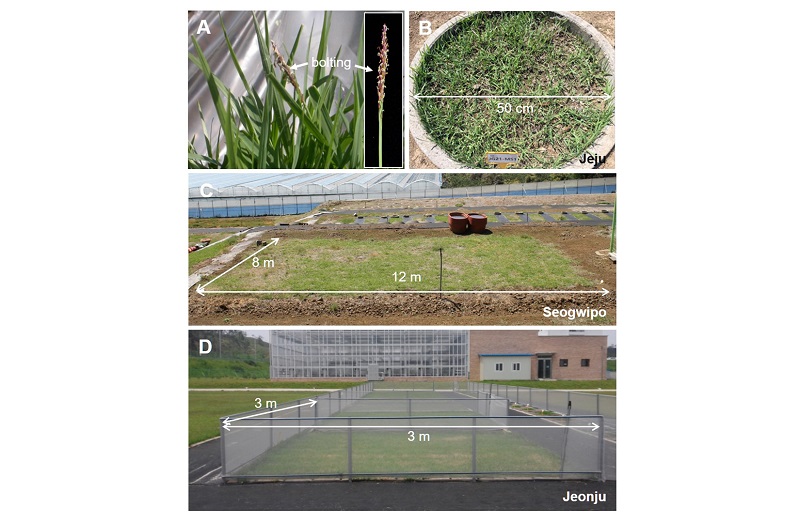Abstract
This study was performed to test the stability of the unbolting trait of JG21-MS1, a genetically modified zoysiagrass that was previously exposed to gamma-ray radiation in 2006. The sterile JG21-MS1 plant has been cultivated through vegetative propagation in pots or in small garden beds for nearly 10 years. To check bolting recovery, we thoroughly looked to find the bolting of JG21-MS1 under various experimental conditions. JG21-MS1 lawns were established and maintained in three different regions: Jeju and Seogwipo in Jeju-do, and Jeonju in Jeollabuk-do. However, the presence of JG21-MS1 bolting recovery was not found. To promote the flowering of zoysiagrass, we exposed JG21-MS1 to artificial long-day light conditions with low temperatures. However, no flowering stems were found from JG21-MS1 in these experiments. Thus, our study indicated that the radiation-induced unbolting trait of JG21-MS1 is an immobilized trait that cannot be restored easily under natural or artificial conditions. In conclusion, JG21-MS1, a genetically modified herbicide-tolerant turfgrass with an unbolting trait, is unable to produce pollen because of its absence of reproductive organs. Thus, if JG21-MS1 were to be released into the wild, it is highly for it unlikely to disturb its surrounding flora through pollination.
Figures & Tables

Fig. 1. Scale of garden beds or fields to test the recovery of JG21-MS1 bolting in three different areas. A, shape of the bolting in wild type zoysiagrass; B, hume concrete pipe bed in Jeju National University, Jeju, Korea; C, test field in Namwon-eup, Seogwipo-si, Jeju, Korea; D, test field in Rural Development Administration, Jeonju, Korea.


